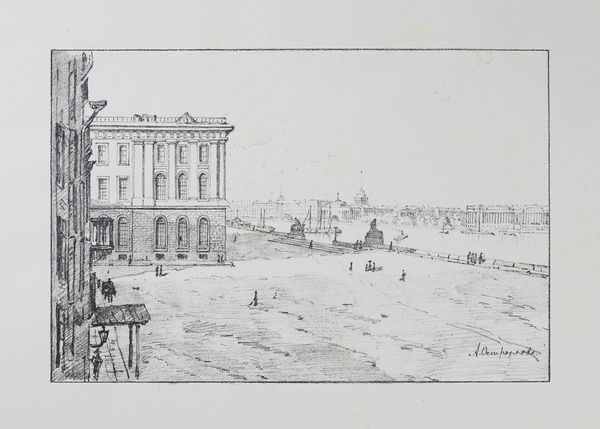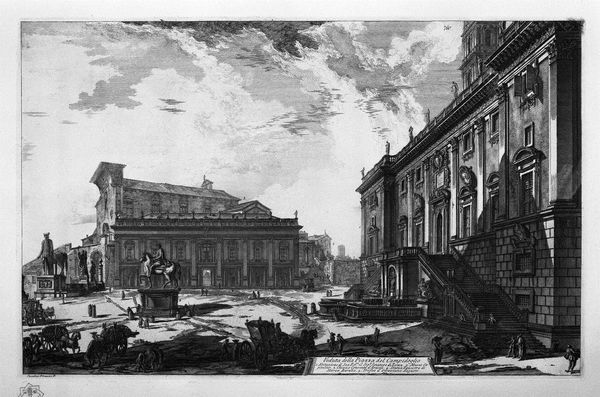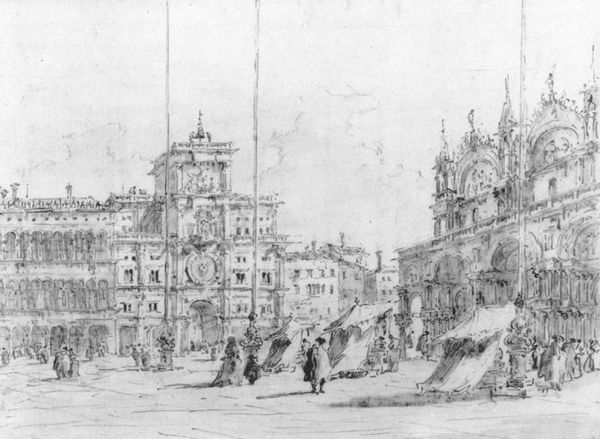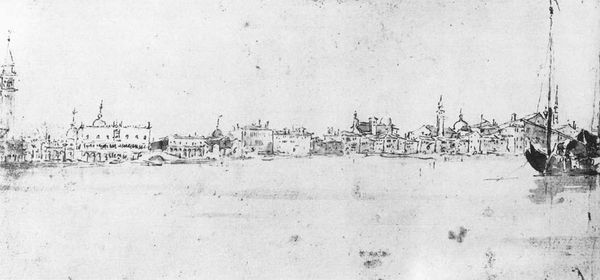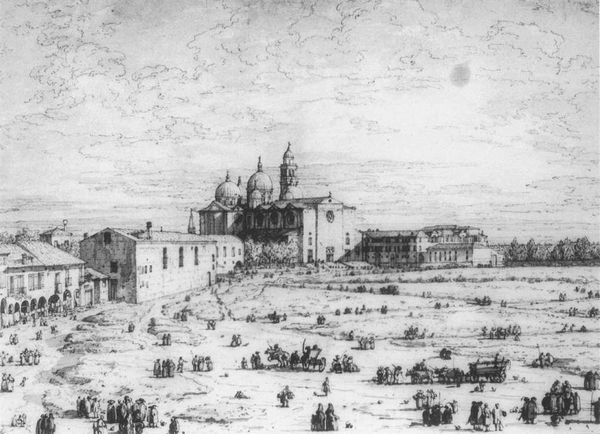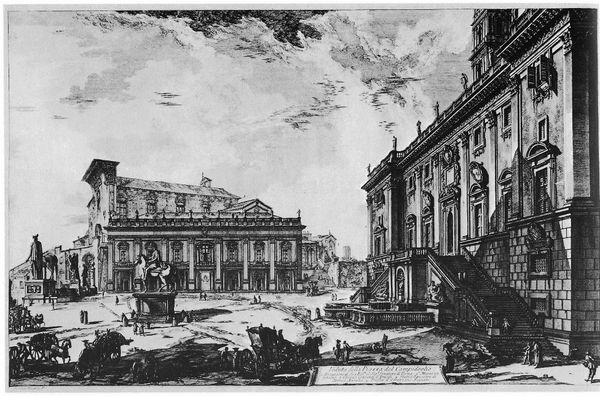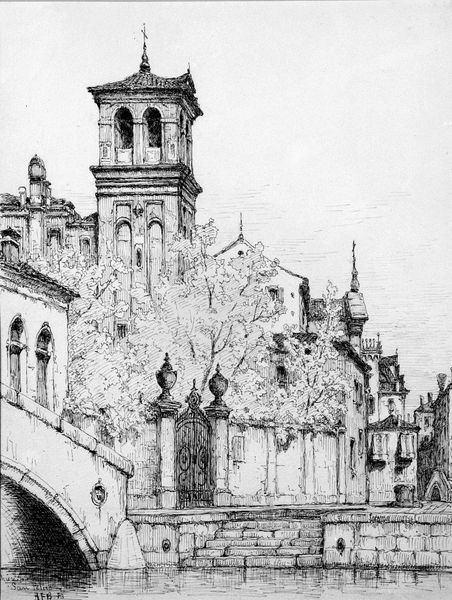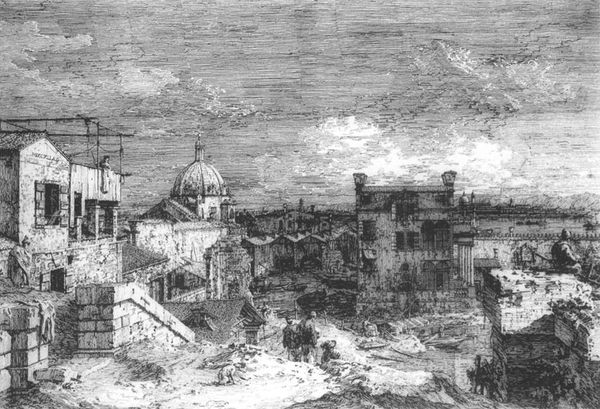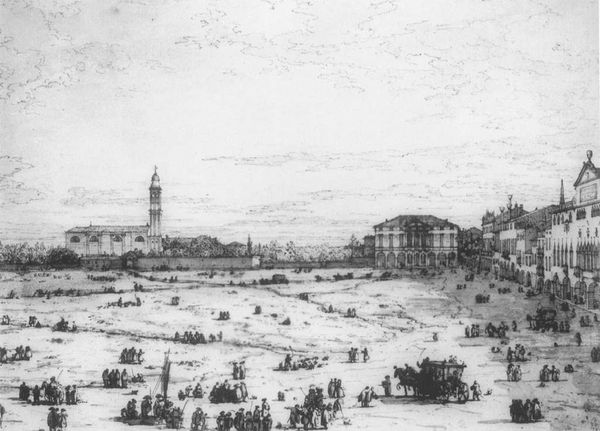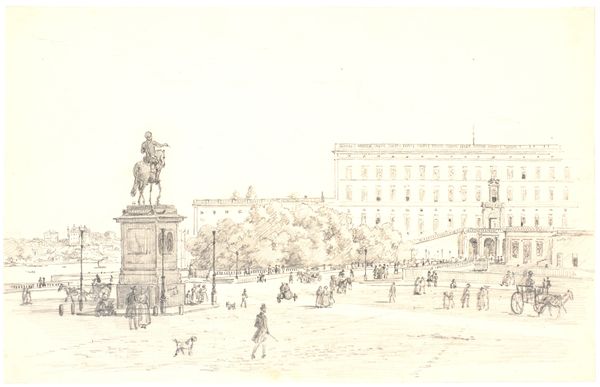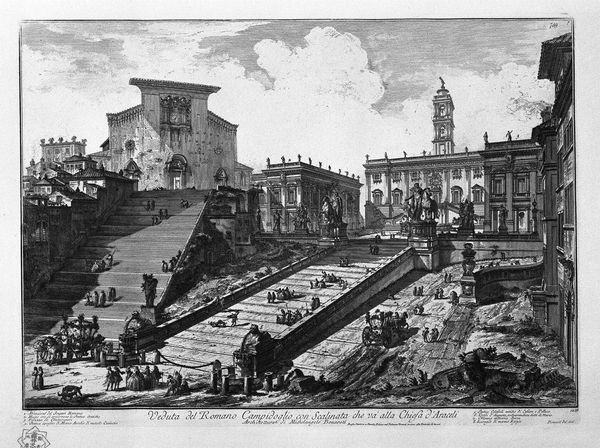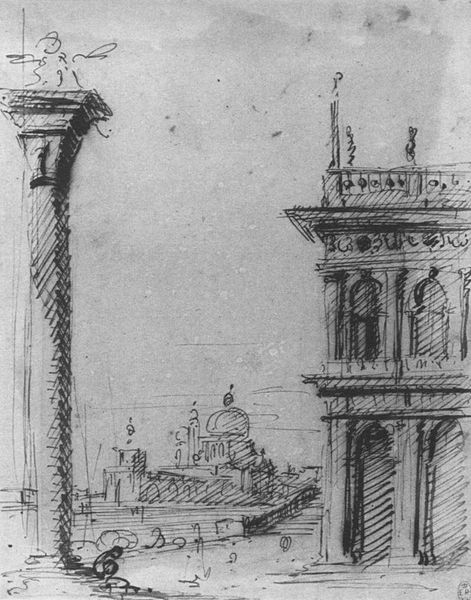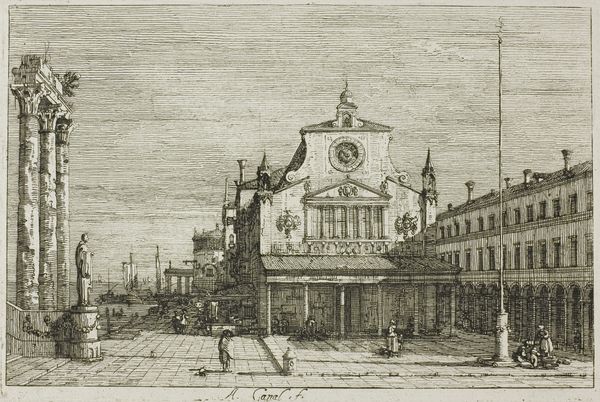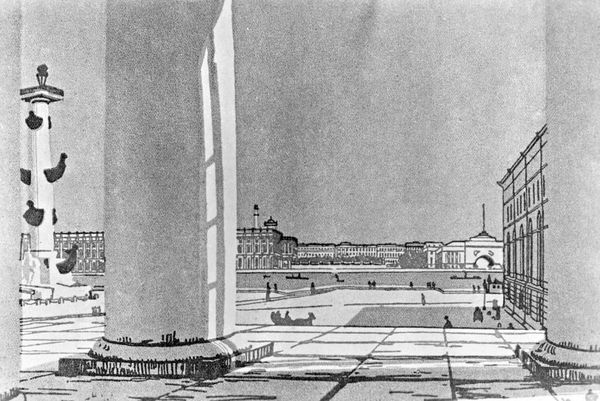
Copyright: Public domain
Editor: This is Francesco Guardi's "San Giorgio Maggiore," a drawing made around 1780, using ink on paper. It feels so…dreamlike. Like Venice as a faded memory. How would you interpret this work? Curator: Ah, Guardi. He’s less about architectural precision and more about capturing a mood, isn’t he? See how the ink washes across the paper, almost dissolving the edges of the buildings? It’s as if he's asking: what IS Venice, if not a reflection, a shimmering illusion on the water? Does the drawing's sketch-like style give it a fleeting quality for you, or is it something else? Editor: Definitely fleeting. Like a quick sketch in a travel journal, capturing the essence without all the details. Curator: Exactly! And that's the magic, isn’t it? The baroque architecture is there, the lagoon, the boats – but they’re all suggested, hinted at. It’s about capturing the feeling of Venice, its impermanence, its constant dance with light and water. You almost feel the sea spray! For Guardi, the city itself becomes this sort of ethereal, emotional experience. Editor: It really does. I see how the sketchiness contributes to that. I had initially focused on its incompleteness. Curator: Incompleteness IS the point, I would venture. Think about Venice – it’s been reinvented for centuries, and never fixed or complete. The beauty, sometimes, is in the gaps, in what's left unsaid. You add yourself, like the city asking each to leave their mark. Editor: I’ll definitely look at his work differently now, considering his perspective on capturing Venice! Curator: Yes! Next time, consider that every time you gaze at it, Guardi calls to you to remember your dreams of Venice. I wonder, what Venice do you see?
Comments
No comments
Be the first to comment and join the conversation on the ultimate creative platform.
